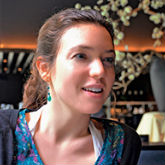[img_gallery][/img_gallery]
The Malaysian Nature Society is the country’s largest and oldest non-government organisation and currently boast 4,000 members who join in the effort to celebrate and conserve the natural beauty of the country. Sarah Rees caught up with the head of communications, Andrew Sabastian, to find out more about this historical society and why he loves his job.
Why did you get involved with the Malaysian Nature Society (MNS)?
I wanted to lend a hand and hopefully make a difference.
What was your earliest interaction with the natural world?
I grew up in FRIM Kepong as my dad was attached to FRIM and the Forestry Department. We did not have many neighbours, only greenery in the form of beautiful lowland forests complete with a river and even durian trees. We lived there for nearly 20 years.
How long have you been with the MNS?
It has been almost 14 years.
As Head of Communications, what is a typical day like for you?
There are not many typical days! Activities tend to include drinking lots of coffee, checking and managing our e-media platforms, checking out potential issues in the media, answering internal and external emails, meeting with the various units within my division, and attending meetings.
What are some of the biggest challenges you face?
One of the biggest challenges is the slow development of environmental consciousness amongst Malaysians.
What do you enjoy most about your work?
I like the fact that there is always variety in the events and activities we conduct. If you love the outdoors as much as I do, it is a very enjoyable job.
What has been your more cherished memory so far?
I love meetings students who remember me from my days as an enviromental education officer (in MNS).
What are you currently working on?
With some friends, we have conceptualised and are about to organise the first public World Tapir Day event in Taman Negara on 27 April. Taman Negara Kuala Tahan is the best place in the world to watch the Malayan Tapir.
Is it difficult to recruit members for the MNS?
The challenge is to retain members, not so much get them signed up. The bigger portion of our members is middle-aged to senior citizens, and most members are locals. We have a large following of members who have been with us through the years. We are now trying to find new and interesting ways to engage with the young, but this will be our challenge for the next few years.
Do you feel that local people are aware of the importance of preserving and protecting their natural heritage?
Malaysians are getting more aware, but we as a nation are still far behind in awareness or doing something concrete to preserve our forests and natural heritage. For many years we [Malaysians] have taken greenery for granted and, as it is not a major part of our educational syllabus, nature appreciation has taken a back seat.
How do you educate people about nature and responsible stewardship?
The best way to educate people is through direct contact, especially during trips and excursions. The “hands on” experience is priceless; much better than another boring speech or powerpoint presentation.
Are awareness levels rising?
Yes. Thanks to adverse weather phenomena, celebrities, and Hollywood, people are starting to be aware and most will now make an effort, if asked.
What are you hopes for the future?
I hope that the MNS continues and remains the best voice for nature conservation in Malaysia. I also hope that it is not too late to rehabilitate lost forests, to preserve whatever little we have, and to someday connect all these special sites.
What makes Malaysia unique?
We still have the oldest rainforests, largest caves, the most diverse range of coral and marine fish, largest flower, and we are one of only two countries in the world to have two types of elephants. The list goes on….
How can people get involved with the MNS?
Sign up as a member or like us on Facebook and immediately a new avenue and thread of information and experience opens up for you. We have volunteer programmes, children’s holiday camps, field centres for members to stay, and much more.
Why should people join?
The common binding force is the love, understanding, and appreciation of nature. We live it, showcase it, and hope that people will be inspired and join in. There is great strength in unity. We can combine all our voices through the MNS. As the MNS is localised and the oldest environmental NGO in the country, starting before Malaysia was formed, we have history and historical knowledge to help us.
———————————————————————————————————
Mother Nature
The Malaysian Nature Society was formed back in 1940 when a group of British nature enthusiasts decided to pool their field notes and research as a means of preserving their accounts for the Malaysians to come. They worked together to produce the first Malayan Nature Journal, which continues to be published quarterly to this day.
One of the most remarkable of the founding fathers was actually a woman, Gladys Le Mare, who was the journal’s original editor and brought her skills as a zoologist and her fascination with the natural world to her honorary position.
Gladys was born in the UK and, after earning a first class degree from Oxford University in Zoology, spent many years teaching in South Africa before moving to Singapore to join her husband Deryck, then Assistant Director of Fisheries for the Strait’s Settlement.
Gladys made a dramatic exit from Singapore as the Japanese moved in during the Second World War, miraculously making it to Scotland in one piece after a three month trip from Singapore. Her husband survived internment in a Japanese Prisoner of War camp and the couple returned to Malaya in 1947 once the war was over, before returning to the UK for good in 1957. Gladys died, aged 55, in 1967, but her legacy remains and the Malaysian Nature Society lives on to continue her work of preserving, celebrating, and recording the natural splendour of Malaysia.
Pick A Park
The Malaysian Nature Society has various parks and nature centres in the country for visitors to get close to nature and support the Society’s superb projects. Here are some you can head to:
Kuala Selangor Nature Park (KSNP)
The MNS stepped in to prevent this park being turned into a golf course in 1987 and it is now an oasis of flora and fauna as well as being home to the endangered Silvered Leaf Monkey. Located 20km from KL, the park has a visitor’s centre, accommodation, and various walking trails.
Nature Education Centre
Situated within the Forest Research Institute of Malaysia (FRIM), the NEC is popular with groups of children and adults for nature walks, bird watching, and the canopy walk. There is accommodation available and various packages for staying overnight.
Rimba Ilmi Botanic Gardens
Also known as The Forest of Knowledge, Rimba Ilmi is located within the University of Malaya and is 80 hectares of lush tropical jungle and home to more than 1,600 species of plants. Nature appreciation programmes are often run for groups and the gardens have facilities including a Conservatory of Rare Plants and Orchids.
Dark Cave Conservation Site
This is one of the main caves at the Batu Caves site and has been fascinating scientists since it was discovered in 1878. It consists of 2km of surveyed passages with seven major sections and boasts some amazing cave formations.
BOH-MNS Field Study Centre
First established in 1989, this Field Study Centre is located in the Cameron Highlands on a former BOH plantation and is a popular place for people to stay and enjoy the surrounding countryside.
———————————————————————————————————
For more details on the Malaysian Nature Society, visit www.mns.my.
———————————————————————————————————
Source: Senses of Malaysia May-Jun 2013
What are your thoughts on this article? Let us know by commenting below.No registration needed.
"ExpatGo welcomes and encourages comments, input, and divergent opinions. However, we kindly request that you use suitable language in your comments, and refrain from any sort of personal attack, hate speech, or disparaging rhetoric. Comments not in line with this are subject to removal from the site. "

















